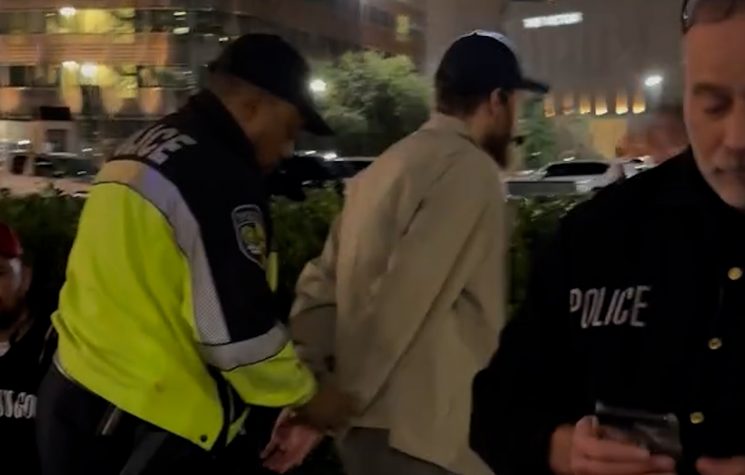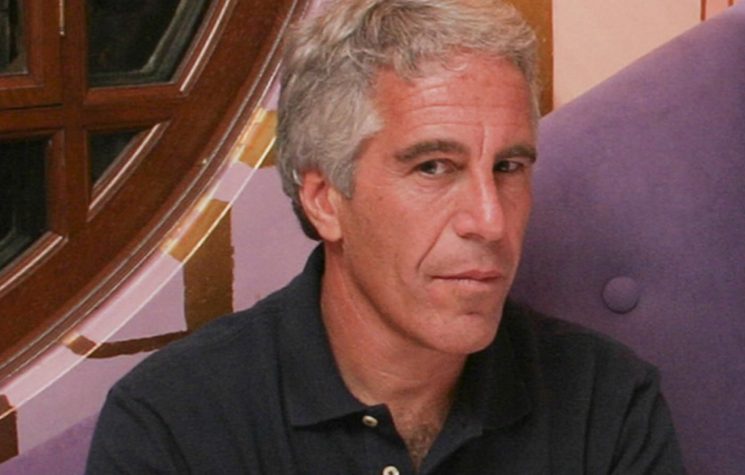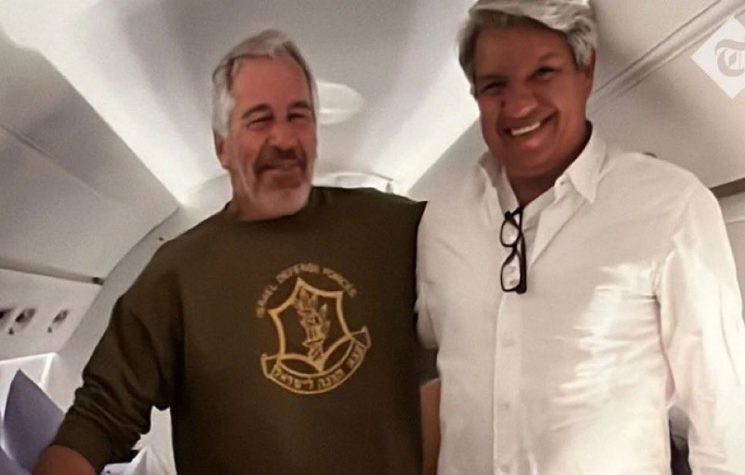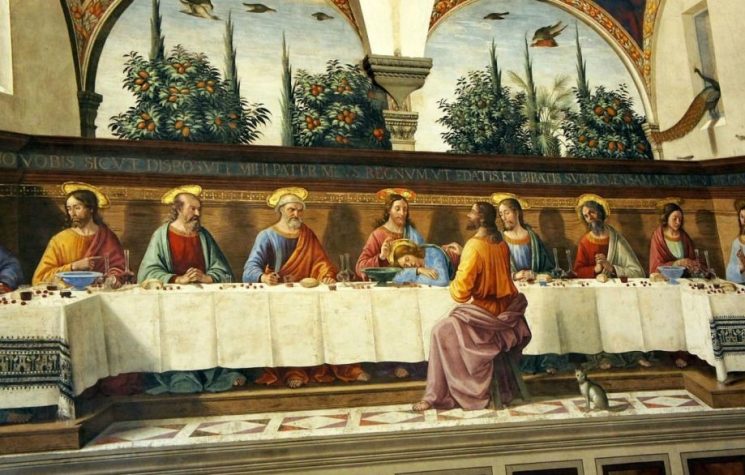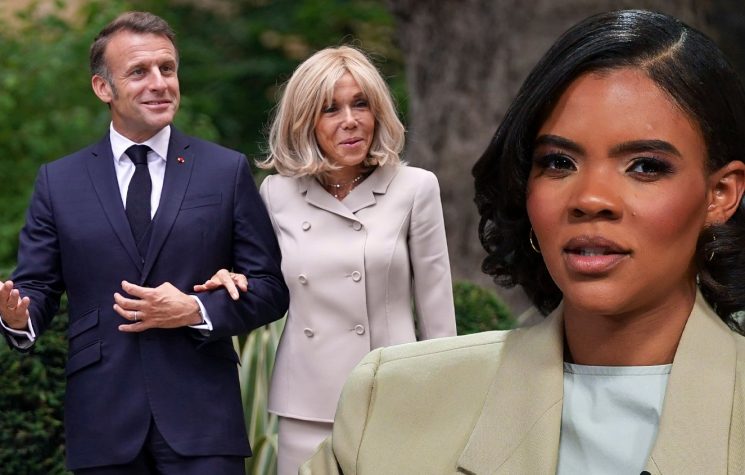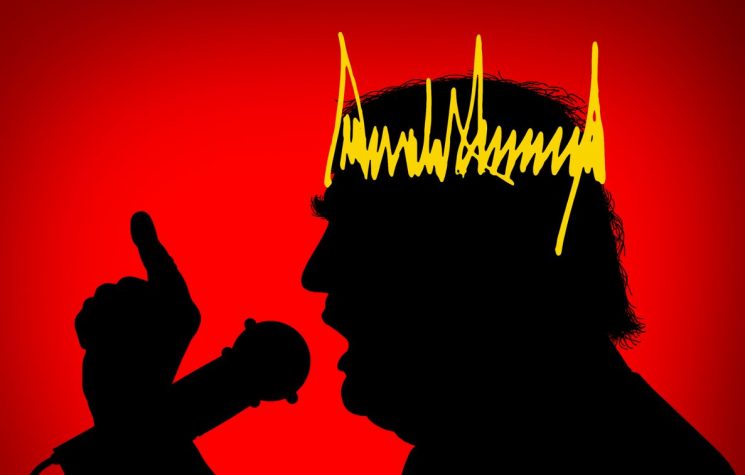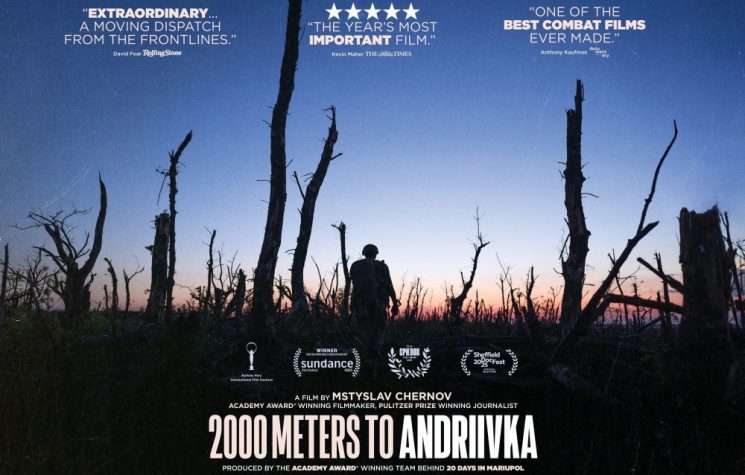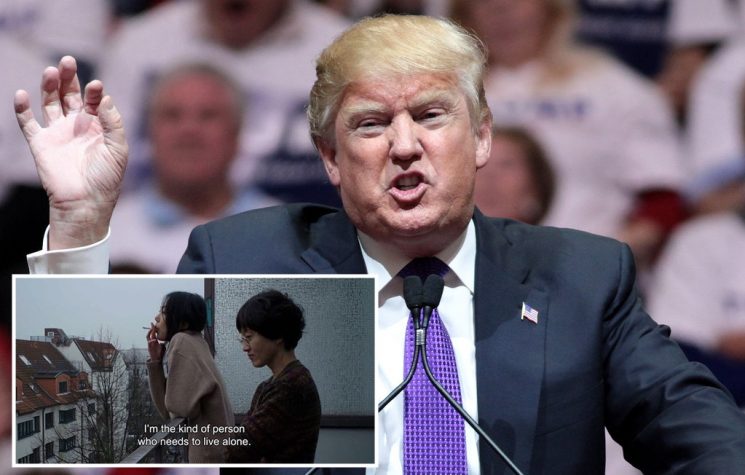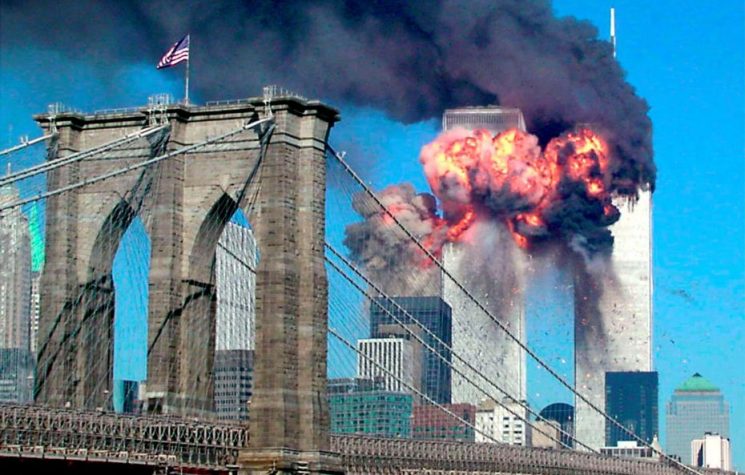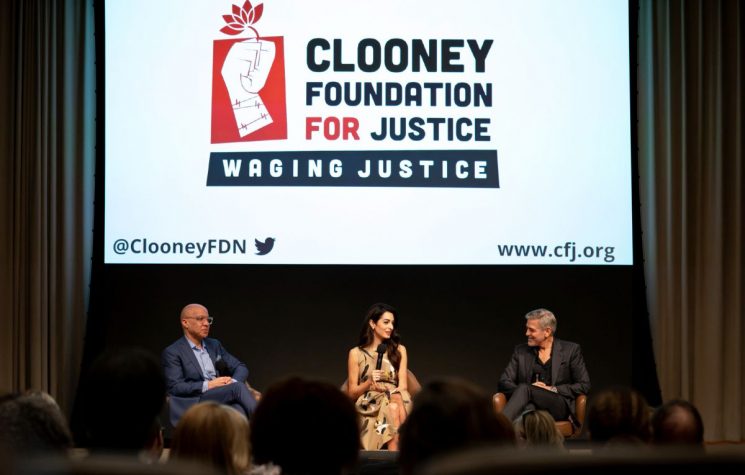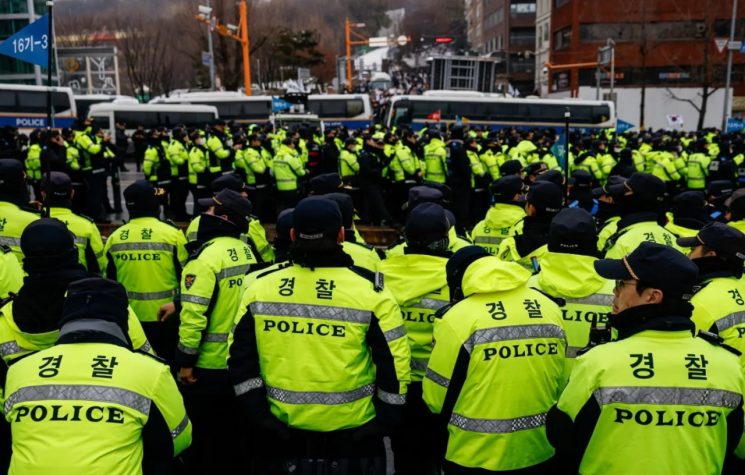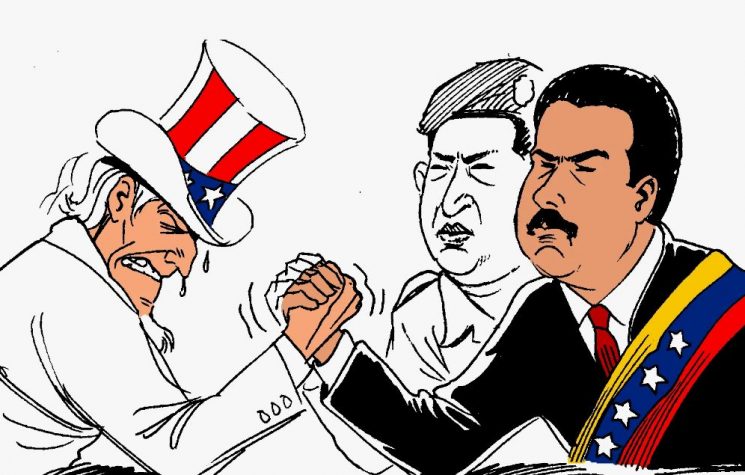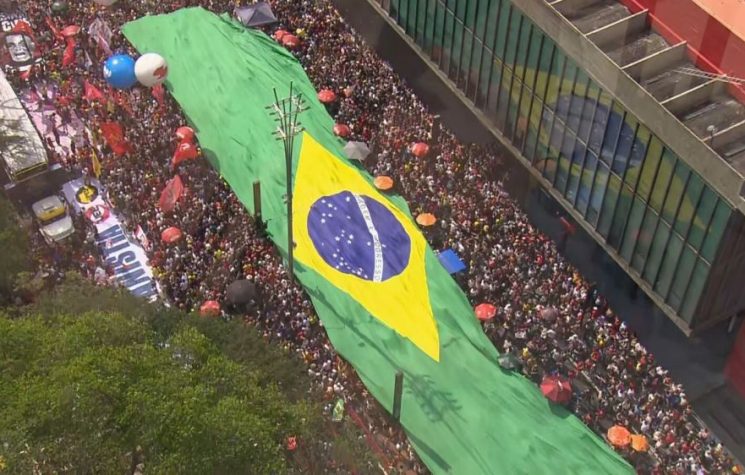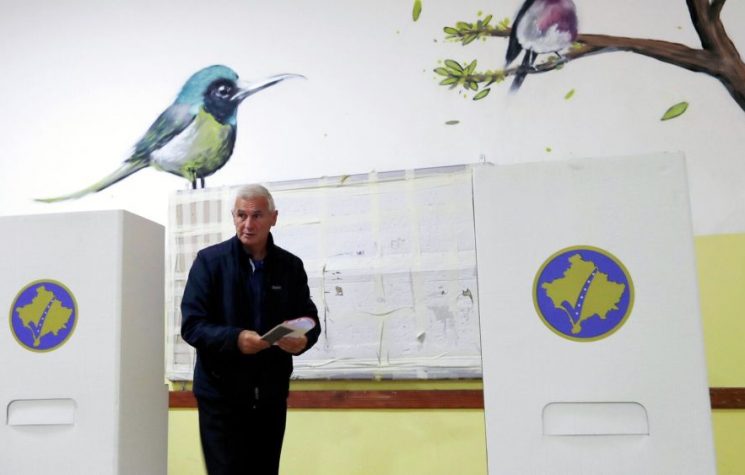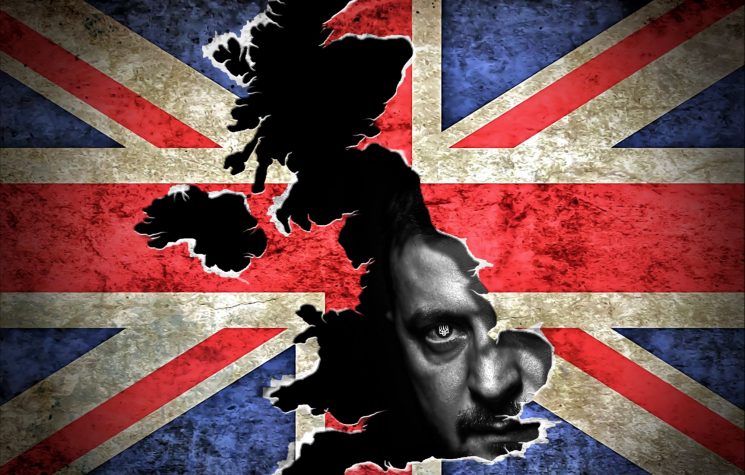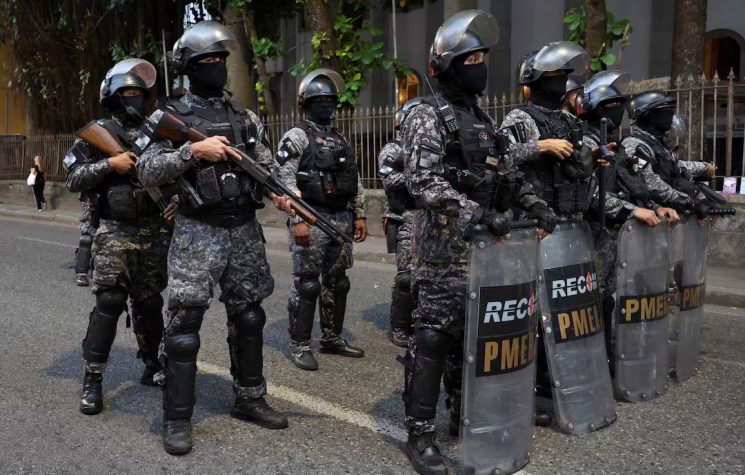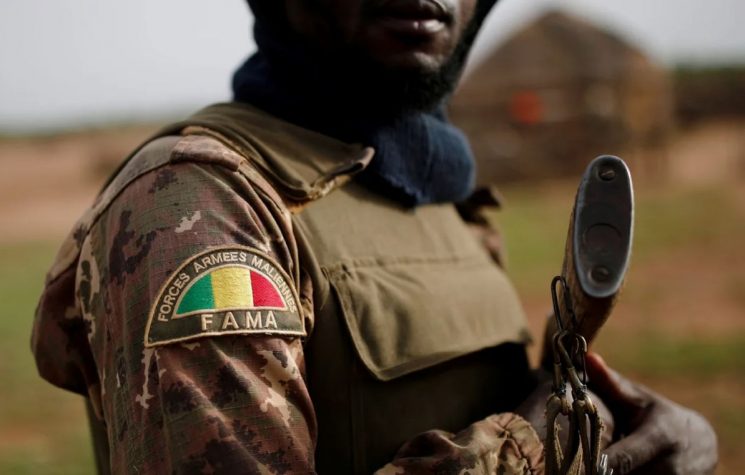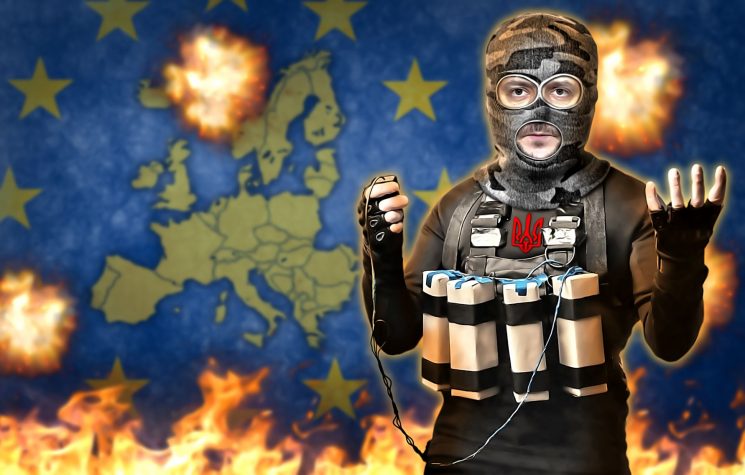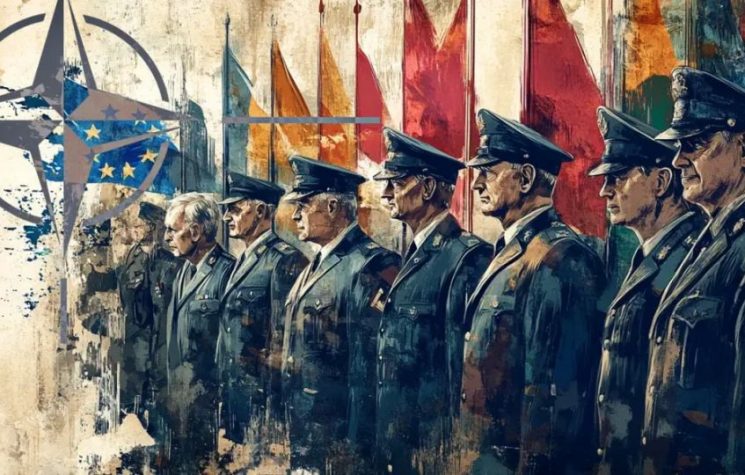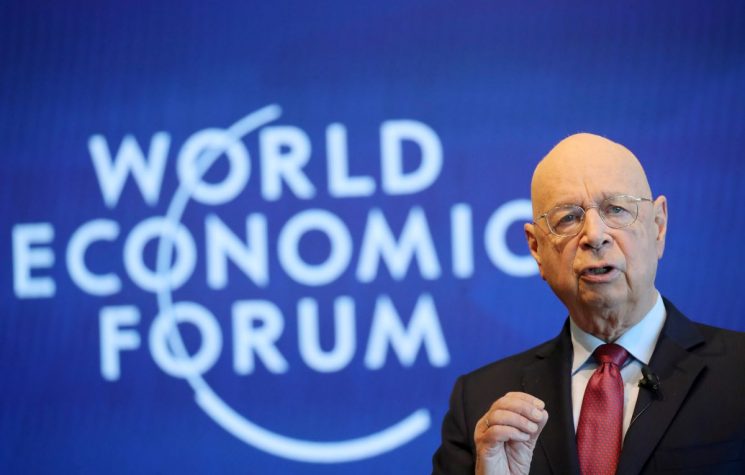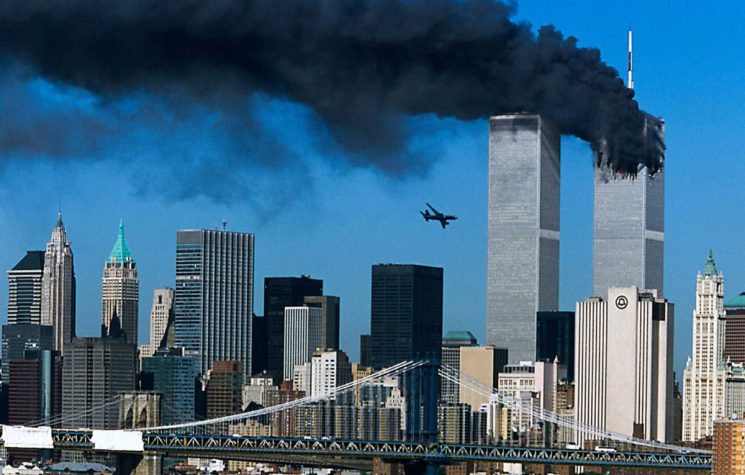In the movie, we have a dual reference to the ‘New World Order’ and the terrorist attacks of 9/11, two critical events separated by 11 years.
❗️Join us on Telegram![]() , Twitter
, Twitter![]() , and VK
, and VK![]() .
.
To say that The Big Lebowski – written, produced, and directed by Joel and Ethan Coen – has captured the heart of Hollywood would be a serious understatement. The 1998 crime comedy, aside from becoming a cult favorite for millions of film aficionados, was selected for preservation in the U.S. National Film Registry by the Library of Congress for its “cultural, historical, and aesthetical significance.” And according to at least one poll, the film is considered the best of all time, surpassing even Citizen Kane and Star Wars. But is this iconic production, chock full of quotable gems (“Obviously, you’re not a golfer”), dream sequences and idiosyncratic dialogue, significant for other less conspicuous reasons as well?
The primary thesis of this essay is to determine, in pure ‘conspiracy theorist’ fashion, whether the The Big Lebowski was created as a vehicle for predictive programming and subliminal messaging for the epic historic event of our times, now known concisely as ‘9/11,’ or for pure and innocent adult entertainment.
For the uninitiated, predictive programming is a psy-op technique (that many academics chuckle over) where a foreshadowing occurs in fictional films and novels to pave the way for – to quote H.G. Wells – “things to come.” According to its adherents (not least of all, Bart Simpson and Family Guy fans), it is a subtle conditioning of the mass consciousness to accept dramatic, life-altering events, like 9/11, typically through the world’s new religion known as the entertainment industry. Subliminal messaging, meanwhile, are words or images that are passed to the human mind without the mind being consciously aware of them. This is a simple technique commonly used in advertising – naked bodies appearing in a glass of whisky, for example – but there is plenty of evidence for its usage in the film industry as well.
So let’s get started.
In the opening scene, Jeff Lebowski, aka ‘The Dude,’ played by Jeff Bridges, is at the grocery store where he is purchasing a carton of half-and-half cream. Right out of the gates, this is a seemingly redundant part that serves no apparent purpose aside from presenting a fascinating detail that many people are already aware of. As the Dude pays for his purchase, he is seen writing out ‘September 11, 1991’ on the check, a date that is historically famous for two notorious reasons: it was the exact day in history (1990) when U.S. President George H.W. Bush delivered his ‘New World Order’ speech before a joint session of Congress, and it would be the day three years later when terrorists would attack the World Trade Center and the Pentagon on September 11, 2001.
So here we have a dual reference to the ‘New World Order’ and the terrorist attacks of 9/11, two critical events separated by 11 years. To emphasize the point, the very first lines of the film are uttered by none other than George H.W. Bush, who appears on an overhead television in the grocery store telling news reporters, “This will not stand, this aggression against Kuwait.”
Incidentally, considering the date of the check, the film’s obsession (especially on the part of Walter Sobchak, the Dude’s Vietnam-vet friend) with Saddam Hussein seems misplaced considering that, factually speaking, the Gulf War had concluded almost seven months earlier, on February 28, 2001. This naturally follows that George H.W. Bush appearing on the television in a news broadcast, condemning the “aggression against Kuwait,” was also chronologically inaccurate. This suggests that the Coen brothers, or others involved in the production, were more interested in promoting the date ‘September 11’ than making sure the facts in the film were historically accurate. Moreover, why did the creators of this film find it necessary to include the mundane detail of the Dude performing the checking-signing ceremony in the first place? Why not just pay cash? Again, because it offered an opportunity to immediately highlight the crucial date of 9/11, which seems to have been the central focus of the entire film.
But even before this loaded opening scene, the drawling narrator (played by Sam Elliott) provides an introduction to the Dude while the opening song, Tumbling Tumbleweeds, drones on almost unnoticed in the background. Tumbling Tumbleweeds is a famous Western song composed in the early 1930s by the composer Bob Nolan.
Here are the lyrics to the song:
See them tumbling down
Pledging their love to the ground
Lonely but free I’ll be found
Drifting along with the tumbling tumbleweeds
Cares of the past are behind
Nowhere to go, but I’ll find
Just where the trail will wind
Drifting along with the tumbling tumbleweeds
I know when night has gone
That a new world’s born at dawn
I’ll keep rolling along
Deep in my heart is a song
Here on the range I belong
Drifting along with the tumbling tumbleweeds
Now, with the dramatic events of 9/11 in mind, consider the opening lyrics, “See them tumbling down, Pledging their love to the ground…” It’s a morbid thing to contemplate, but bodies were certainly seen “tumbling down” from the North and South Towers on 9/11, and, in the poetical imagery of a devious bard, along the lines of a Shakespeare, it could be said they were “pledging their love to the ground.” In the next stanza, we are greeted with the following lines, which seem to have little to do with tumbleweeds: “I know when night has gone, That a new world’s born at dawn…”
Now, to be sure, if the events of 9/11 opened the way for anything, it was certainly the new world order, which the lyrics strongly hint at, right down to the world-altering event occurring “at dawn.” Interpret that as you like, but it seems to be rather heavy going for a country Western song (how could a song written in the 1930s have precipitated an event that would occur decades later is another question). One more interesting thing worth mentioning: in the official motion picture soundtrack of The Big Lebowski, the song Tumbling Tumbleweeds is nowhere to be found. For some reason it did not appear on the soundtrack release.
Furthermore, the official promotional poster for the film carried the disjointed slogan, ‘Times like these call for a Big Lebowski,’ as though the ‘Big Lebowski’ were a reference to some extraordinary event, not a character.
This brings us to the first scene at the bowling alley, where the Dude, Walter and Donnie are discussing the Dude’s Oriental rug, which “the Chinaman” peed on. If you haven’t seen the film that’s alright because, to quote Joel Coen, the plot is largely “unimportant.”
“We wanted to do a [Raymond] Chandler kind of story – how it moves episodically, and deals with the characters trying to unravel a mystery, as well as having a hopelessly complex plot that’s ultimately unimportant,” Coen said. Why anyone would want to build an entire film on a plot that’s “hopelessly complex and unimportant” seems rather odd, unless the film was being used as a vehicle for something else, like maybe a messaging device?
The first noteworthy thing about this particular scene is that the Dude, Walter and Donnie are bowling from lane 22. Yes, possibly this means nothing, but it does seem more than just a coincidence considering the opening scene with the number 11 appearing on the check, representing two significant events in world history occurring on that date (2X11=22). And we all know how those who dabble in the occult enjoy numerology.
Now, following a heated discussion as to why the other Jeff Lebowski, a disabled millionaire whose nymphomaniac trophy wife “owes money all over town,” should compensate the Dude (whose name is also ‘Jeff Lebowski’) for the soiled carpet, the Dude prepares to take his turn bowling. Before he does so, however, he performs a stretching movement where his arms are extended outwards and his head is bent backwards. In other words, he assumes what could best be described as a crucifixion pose. To further enhance the imagery, there appears on his white t-shirt a small dark stain, in about the same place where Christ’s side was pierced by a Roman soldier’s spear on Calvary. How such symbolism is connected to 9/11 is open to interpretation, but a forewarning or foreshadowing of impending tragedy is a possible one.
While on the subject of Christ, there is actually a guest appearance from ‘Jesus’ himself, a depraved, pedophile member of the opposing team played by John Turturro. With the introduction of this character, we have another possible reference to the date of September 11, in that many people have speculated that the actual birthdate of Jesus Christ was not on December 25, which was actually the date of a Roman pagan holiday known as ‘Saturnalia,’ but on September 11, 3 BC.
Next, following the Dude’s meeting with Jeff Lebowski where he managed to obtain a new carpet, we are back at the bowling alley, where Walter, dog-sitting for his ex-wife’s Pomeranian, joins the Dude and Donnie. As Walter enters, he remarks with aggressive enthusiasm, “If you will it, it is no dream!” When the Dude inquires, “What the f*ck is that,” Walter answers, “Theodore Herzel. The state of Israel. If you will it, Dude, it is no dream.” The Dude had been inquiring about the dog inside of the carrier, but no matter.
While Walter is explaining to the Dude why he can’t board the dog (“It’s a show dog, its hair will fall out!”), he accuses Smokey, a member from the opposing team, of crossing over the line while taking his turn. Smokey denies the accusation and insists that they give him his rightful points, to which Walter explodes in anger and produces a handgun and says, “Smokey, you’re entering a world of pain.” Smokey insists, to which Walter points the gun in his face and yells consecutive times, “Mark it zero!” Three years later, the smoldering site where the World Trade Center once stood would be declared ‘Ground Zero.’
ground zero (noun) 1: the point on the earth’s surface directly above, below, or at which an explosion (especially a nuclear explosion) occurs.
This brings us to the Dude’s apartment, where he is paid a visit by his landlord, Monty, who reminds him that he’s performing a dance quintet, at Crane Jackson’s Fountain Street Theater on Tuesday night. He also lets slide the remark that “tomorrow’s already the 10th…just slip the rent under my door.” Incidentally, this is another chronological slip in the film, as it begins with the Dude signing the check in the grocery store on September 11 (unless he post-dated the check for lack of funds).
An incredible thing happened on September 10, 2001, which was largely forgotten due to the tragic events that happened one day later. On the Monday before the most unforgettable Tuesday morning of all time, then Secretary of Defense Donald Rumsfeld, whom Henry Kissinger once described as “the most ruthless man” he ever knew, made the shocking announcement that “according to some estimates [the Pentagon] cannot track 2.3 trillion dollars in transactions(!)” The next day, American Airlines Flight 77 struck the Pentagon in its western façade, opposite the side where the top military brass is located, destroying the accounting office and all digital traces of the missing trillions as well. All things considered, the western façade was a very strange choice of targets for Osama bin Laden, the purported ‘king of terror,’ when the more logical option would have been to take out the U.S. high command in one fell swoop on the other side of the building. Meanwhile, was the missing $2.3 trillion that Rumsfeld alluded to the ‘rent due’ to some exceedingly powerful group of individuals or organization, possibly the very people who orchestrated the attacks?
In a later scene, Dude shows up at the studio of Maude, Jeff Lebowski’s daughter, who is an artist. As the Dude walks into her darkened studio, he is greeted with ominous female chanting. A canvas with some sort of depiction, like a cross between a human being and a bird (plane?), is lying on the floor across the room. Suddenly, amid terrifying screeching sounds, Maude, suspended by unseen cables, is barely visible as she flies across the studio, directly above Dude’s head, flinging paint furiously onto the canvas as she passes over it.
In the background is a faintly illuminated wall containing horizontal and vertical lines that bears a strong resemblance to a skyscraper, yes, precisely those skyscrapers. An upright canvas in the left of the frame features a swirling composition accompanied by a mannequin’s severed head. A painting of a large pair of scissors, suggesting a ‘cutting down,’ possibly of a Freudian nature, appears on the right near a standing ladder. Following Maude’s strange performance, two male assistants lower her naked body to the floor by cables. The entire scene elicits a sense of malevolent evil.
So here we have essentially an assault on the human form that appears on the canvas, while the flying act was carried out with the help of assistants and pulleys; in other words, no small amount of artifice to pull off the act. Sound familiar?
So what can we make of this? Here is one explanation: the hurling of paint on the canvas, containing something vaguely resembling the human form already appearing on it, could be said to represent the media-generated narrative that carried the day on 9/11, which essentially blamed everything on Osama bin Laden mere hours after the buildings fell. The great mass of humanity, seized with terror-stricken panic as the day’s events unfolded, was ‘splashed,’ as it were, by the media’s collective narrative that said al-Qaeda had carried out the attack. It is during such moments of shared shock and awe – mass hysteria – when peoples’ subconscious minds are most susceptible to suggestions and explanations, no matter how illogical and ludicrous they may be.
In the next scene, things get a bit more direct as the Dude is accosted and dragged into a limousine where Jeff Lebowski and his assistant proceed to interrogate him. They are enraged and want to know where is the money that Dude was supposed to have paid to his wife Bunny’s kidnappers. When he tries to tell them that “nothing is f*cked here,” Lebowski roars back, “Nothing is f*cked here? The goddamn plane has crashed into the mountain!” I think many people would agree that that is an expression seldom used in normal conversation.
Later, after the Dude is assaulted by some German nihilists and a marmot in his bathtub, he heads to the bowling alley where he tries to explain his plight over drinks with Walter and Donnie. Making little headway on that front, he shouts “f*ck the tournament,” a remark that offends Walter and Donnie, leaving Dude alone at the bar. At this point, the song Tumbling Tumbleweeds begins to play again (‘See them tumbling down, pledging their love to the ground…’) as Sam Elliott is seen seated next to him, donning traditional cowboy apparel.
“How you doin’ there, Dude,” asks Elliott in his trademark raspy voice.
“Not too good, man,” replies Dude.
“One of those days, huh,” asks Elliott.
“Yeah.”
“Well, a wiser feller than myself once said, ‘Sometimes you eat the bar and, well, he eats you.”
“That some sort of Eastern thing,” asks Dude.
“Far from it,” responds Elliott.
The next scene of apparent relevance happens at the aforementioned Crane Jackson’s Fountain Street Theatre, where Dude’s landlord Monty performs a routine called the Dance Moderne. Here we should keep in mind the words of co-director Joel Coen who said that the plot to the film is “ultimately unimportant.” So perhaps it is these bizarre and unconnected side events that we should focus our attention on. Thus, inside of a practically empty theatre on a Tuesday night, Monty begins his drama routine behind an illuminated screen where only the silhouette of his body can be seen.
We are reminded of the violent piece of performance art that Maude did as she hurled paint at a canvas in the style of Jackson Pollock while suspended and ‘flying’ above the floor. Like that performance, Monty’s dance routine depicts some sort of tragedy, albeit one that has already happened. He begins his routine stooped over with his hand clasping his head as if expressing grief. This is followed by various other movements before he stands on a chair in front of the screen and looks upwards, hands outstretched upwards as if desperately pleading for something. Maybe at least one objective news channel?
Following a meeting with Jackie Treehorn, the porn producer to whom Bunny Lebowski owes money, Dude’s drink is spiked and he passes out. This leads us to a musical dream sequence that even comes with the title of ‘Gutterballs.’ The scene begins with the 1968 psychedelic rock song by Kenny Rogers called Just Dropped In, where once again, as in the song Tumbling Tumbleweeds, the idea of falling is emphasized.
The dream begins with the Dude entering between two massive monolithic stone structures – towers? – to the accompanying lyrics:
I woke up this mornin’ with the sundown shinin’ in
I found my mind in a brown paper bag within
Immediately following this, ‘Saddam Hussein’ (we know it’s him as ‘Saddam’ appears on his name badge) is seen working in front of a display case containing bowling shoes. With his back turned to us, he is searching for a pair of shoes for the Dude. As he is examining the selection with his extended index finger, he points directly at a pair of shoes bearing the number 11, which just happens to be the only pair that has the numbers highlighted in white paint. At this point the camera focuses upwards to show the display case for the bowling shoes soaring upwards to the sky, tapering off in a pyramid encompassed by a Full Moon, occultist imagery for sure. The overall effect is that of a person looking upwards at a skyscraper from ground level.
The song’s lyrics continue:
I tripped on a cloud and fell-a eight miles high
I tore my mind on a jagged sky
I just dropped in to see what condition my condition was in
An expressionless Hussein, with the number 11 conspicuous above his left shoulder, hands the Dude a golden pair of bowling shoes.
Now at this point in the dream sequence the audience is exposed to a literal explosion of occult/secret society symbolism that would certainly not go unnoticed by the initiated. Here, the Dude is seen dancing his way down a massive staircase, which, like the previous shoe display case, appears to travel upwards so far that it looks like a pyramid at the top (taken together, an apparent reference to two buildings). The difference is that this second pyramidal-shaped structure is covered in a black-and-white checkerboard design.
The song continues:
I pushed my soul in a deep dark hole and then I followed it in
Here, the occult imagery continues as the black-and-white checkerboard steps extend to a checkerboard floor below where Maude appears in a Viking outfit, wielding a trident, clearly dressed for battle. She is surrounded by 32 dancing girls (plus Maude makes 33), who form two circles around Maude in the very center of the checkerboard floor.
I watched myself crawlin’ out as I was a-crawlin’ in
I got up so tight I couldn’t unwind
I saw so much I broke my mind
I just dropped in to see what condition my condition was in
The Dude grasps her from behind and together they roll a bowling ball down a lane between the opened legs of the 32 showgirls. Then, the Dude is seen flying/floating down the length of the lane, between the girls’ legs as the pins go flying. Now the dream sequence takes on an ominous tone as the body of a naked female appears out of nowhere to consume the entire screen as she is seen falling out of sight (falling and flying is a current theme that runs throughout this film. The first is when the Dude is seen flying over Los Angeles after he was knocked unconscious by one of Maude’s goons; the second occurs when Maude is seen flying in her studio to produce the painting; the third is when the Dude floats down the bowling lane through the legs of the dancing girls; the last, just mentioned, comes as the naked woman is seen falling out of sight). This is followed by the appearance of the three German thugs, dressed in red body outfits, each one carrying huge scissors with which they attempt to slice up the Dude, whose previously elated mood has turned to one of pure terror.
Next we see our protagonist, conscious and out of the dream sequence, running down the middle of a highway with a police cruiser pulling up behind him.
In the next scene, the Dude is thrown by the arresting officers into the office of the Malibu police chief, who proceeds to sift through the contents of Dude’s wallet while seated at his desk. The police chief produces Dude’s only form of identification, which is a discount card from Ralph’s grocery store, where the film began. But it’s what appears below the card, on the police chief’s blotter, which is the most interesting detail here. It takes a fraction of a second to catch it, but at the 1:24:14 mark the details of an airplane flight scrawled on the blotter is just barely visible. It reads: ‘LAX 2:30 pm flight 201’. Furthermore, the information has a cross going through it, as though being cancelled.
A person needn’t be a frequent flier to know that LAX stands for Los Angeles International Airport. In the context of the attacks of 9/11, that particular airport figured quite high in that three out of the four airplanes that were hijacked that day were en route to LAX. While the time of the flight on the blotter doesn’t quite match up with the departures of the aircraft on September 11, it is notable that there is yet another allusion to the number 11 in ‘flight 201,’ which could read ‘two ones,’ or eleven.
So eventually we find the Dude back at the bowling alley where, once again, he meets Sam Elliott the narrator at the bar, where, after some small talk, Jeff Bridges utters his last line of the film, “The Dude abides.” This is a strange non sequitur that nevertheless pleases Elliott, who repeats the phrase, “The Dude abides,” while adding, “I don’t know about you, but I take comfort in that. It’s good knowing he’s out there, the Dude. Takin’ her easy for all us sinners…”










